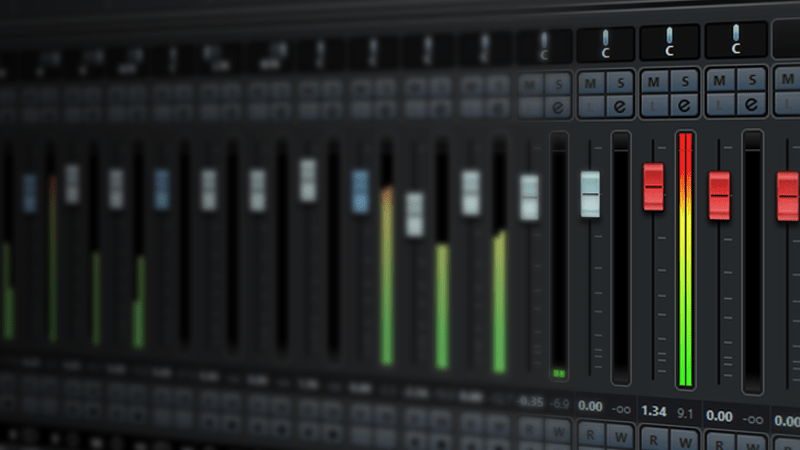Not All Clipping Is Bad: Unlocking the Creative Potential of Audio Clipping Techniques

It was likely one of the very first things you learned about audio production: Avoid the red clip lights! Don't let the meters go into the red! Broadly speaking, this is very good advice, but like anything in life, the devil lies in the details.
Today we're going to talk about why clipping is not always undesirable, how to use it to effectively maximize the creative and technical potential of your productions, and how using a digital clipper plugin to achieve clear, punchy tracks!
Analogue Clipping
We have to be very careful with our terminology here, because the technical dividing line between terms like 'limiting', 'clipping' and 'saturation' can actually be very thin.
Before the advent of digital, we had analogue clipping. Analogue clipping is essentially what guitar amplifiers and pedals use intentionally to create distorted tones. There are all different types of clipping, from symmetric to asymmetric, triode, diode etc.
See, we worked out a long time ago that clipping audio can actually create desirable effects, whether that be via a circuit designed to clip specifically, or by overdriving other circuits with more level than they were designed to handle.
Uses For Analogue Clipping
Aside from generating guitar tones, what are some other good uses for analogue clipping?
Well, a classic one is using saturation/clipping on microphone preamps. Rock vocalists have been doing this for generations to add a midrange grit into the signal to help it stand out above walls of distorted gutiars.
Another one is driving the mix bus VU meter of the analogue console you're using into the red. This was one of the early ways mix engineers used to get mix glue and saturation.
Lastly, a real classic was slamming snare tracks into tape machines. This completely altered the timbral fabric of the sound, making it much fatter, creating a really cool midrange texture, controlling the peaky transients and giving a nice sustain.
Experiment with analogue clipping in your productions to create all sorts of interesting midrange flavours in your tracks! If you don't have access to the analogue gear in question, you can still choose from tons of great plugin emulations.
Digital Clipping
This is where things became more absolute. The hard and fast rule is: "Avoid digital clipping at ALL costs!", and for the most part: that's actually very good advice. One of the reasons we had to establish good gain structuring protocols in digital was the need to avoid the highly non-musical sound of digital clipping.
Digital clipping is absolute. It quite literally chops everything beyond the cut-off. There is no musical, or interesting quality to it. Combined with the proliferation of True Peak standards in the industry, and it's fair to say that many people are, rightly, becoming allergic to digital clipping.
However, it would be unfair to end the story there, as it only tells a fraction of the full narrative.
Uses For Digital Clipping
During the 90s and 2000s, at the height of the mastering loudness wars, engineers were attempting to find ways to make records super loud without squashing the mixes completely through traditional limiters.
One way they discovered to do this very effectively, probably by accident, was to clip the inputs of expensive Analogue-to-Digital converters. See, what happens when you clip full mixes is that the abrupt cut-off of the waveform forces the Digital-to-Analogue converter on the other end to brainfart, because what the waveform is essentially asking it to do is recreate a pure square wave.
Because pure square waves cannot exist in the analogue domain (for reasons we will explore in a future article), what this forces the DAC to do instead is to recreate a faux peak where the original was chopped.
So, what does this actually mean in practice? Well, the peaks being chopped - more than likely - are drum transients. This means that you've effectively found a way to 'cheat' your drum transients through past the 0dBFS cut-off point, whereas a traditional limiter would've completely obliterated them several dBs ago.
This allowed engineers of the time to 'win' the loudness wars (if such a paradoxical milestone is even possible) while still retaining dynamics in their masters.
As you can see, things are rarely ever purely black and white - even with something as polarizing as digital clipping.
How Do You Benefit?
You may be wondering at this point, how can you use these discoveries in your own masters in order to benefit? You likely don't have a mastering grade analogue-to-digital converter just lying around, so how do you recreate this effect more practically?
Well, this is where tools like SubMission Audio's Flatline come in handy. Flatline was created by veteran engineers specifically to recapture that 90s and 2000s mastering magic for the modern producer, in a way more utilitarian package.
Flatline allows you to shape the sound of digital clipping - adding just enough of that juicy analogue saturation magic as is perfect for your mix.
So, in conclusion, don't be afraid to go out there and experiment with clipping! Yes, hard digital clipping should be avoided at almost all costs. Meanwhile analogue clipping can be used to add texture and excitement to your tracks, while the purpose-built form of clipping created by tools like Flatline can help you create loud, clear masters, with almost unbelievable levels of punch.

